Understanding the Mechanics of a Horizontal Directional Drill

Horizontal directional drilling (HDD) is a popular method used in the construction industry to install underground utilities such as water and sewer pipes, telecommunications cables, and electrical conduits. Unlike traditional trenching methods, HDD allows for the installation of these utilities without disrupting roads, sidewalks, or landscapes.
The mechanics of a horizontal directional drill involve several key components. One of the most important parts is the drilling rig itself, which is responsible for creating the hole in which the utility will be installed. The rig consists of a powerful engine, a drill pipe, and a drilling head or bit. The engine provides the necessary power to rotate the drill pipe and drilling head, which in turn creates the hole.
Another crucial component of a horizontal directional drill is the drilling fluid, also known as drilling mud. This fluid serves multiple purposes during the drilling process. It helps to cool the drill bit and lubricate the drill pipe, reducing the friction and heat generated during drilling. Additionally, the drilling fluid also acts as a medium to carry the cuttings out of the hole as the drilling progresses.
Furthermore, the drill operator plays a vital role in the mechanics of a horizontal directional drill. The operator controls the drilling rig’s movements and ensures that the drilling process is carried out smoothly and accurately. They monitor the drilling fluid flow rate, pressure, and temperature, making adjustments as necessary. The operator also carefully tracks the drill head’s location and orientation to ensure the utility is installed in the desired location and alignment.
The Basics of Horizontal Directional Drills
A horizontal directional drill (HDD) is a type of drilling equipment that allows for the installation of underground infrastructure without disturbing the surface above. It is commonly used in civil engineering and construction projects, as well as in the oil and gas industry.
How does it work?
The HDD process involves creating a small pilot hole at the desired location using a steerable drill bit. This pilot hole is then enlarged to the desired size using a reaming tool. Finally, the underground infrastructure, such as pipelines or cables, is pulled through the enlarged hole using a pulling mechanism.
Advantages of HDD
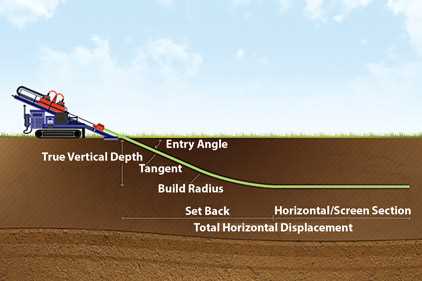
- Minimal environmental impact: HDD allows for the installation of infrastructure without disturbing the surface, minimizing disruption to the surrounding environment.
- Reduced cost and time: Compared to traditional open-cut methods, HDD can be faster and more cost-effective, as it eliminates the need for extensive excavation.
- Flexibility: HDD can be used in a variety of soil conditions, including rocky terrain and urban areas where space is limited.
Applications of HDD
The versatility of HDD makes it suitable for a wide range of applications. Some common uses of HDD include:
- Installing utility lines: HDD is often used to install gas pipelines, water lines, electrical cables, and telecommunications infrastructure.
- Crossing obstacles: HDD can be used to cross rivers, roads, and other obstacles that would be difficult or costly to excavate.
- Horizontal drilling: HDD is also employed in the oil and gas industry for horizontal drilling applications, such as drilling for oil or gas wells.
Conclusion
Horizontal directional drills offer numerous advantages in terms of efficiency, cost-effectiveness, and environmental impact. With their ability to install underground infrastructure with minimal disruption to the surface, these drills have become an essential tool in various industries.
What is a Horizontal Directional Drill?
A horizontal directional drill (HDD) is a trenchless method of installing underground pipes, conduits, and cables without disturbing the surface above. It utilizes a drilling rig with a guidance system to create a pilot hole, followed by the installation of a pipe or conduit using a process called pullback.
The HDD technique is commonly used for installing infrastructure such as water and sewer pipelines, telecommunications cables, gas lines, and electrical conduits. It is particularly beneficial in areas with congested underground utilities, environmentally sensitive areas, or areas where the surface needs to remain undisturbed.
The HDD process starts with the drilling rig being set up near the starting point of the desired pipeline or conduit. The rig is equipped with a drill string, including a drill bit, a drill head, or a drill head with a mud motor, depending on the ground conditions. The guidance system ensures the accuracy of drilling by providing real-time data on depth, pitch, and roll.
The drilling process begins with the drill bit or drill head penetrating the ground at a predetermined angle. The drill string is gradually rotated, and drilling fluid (commonly called drilling mud) is pumped down the drill string to lubricate the bit and carry the drilling cuttings to the surface. As the drill progresses, the pilot hole is gradually enlarged to the desired diameter.
Once the pilot hole is completed, the next step is the pullback operation. A reamer or backreamer attached to the drill string is pulled back through the pilot hole, enlarging it to the intended diameter and creating space for the installation of the pipeline or conduit. The pullback process is controlled to minimize any ground disturbance and to ensure the entire length of the pipeline or conduit is installed properly.
How Does a Horizontal Directional Drill Work?
A horizontal directional drill (HDD) is a trenchless method of installing underground pipes, conduits, and cables without disrupting the surface. This technology is commonly used in construction, telecommunications, and utility industries to handle projects that involve crossing obstacles such as roads, rivers, and environmentally sensitive areas.
Here is a step-by-step explanation of how a horizontal directional drill works:
1. Site Preparation
Before beginning the drilling process, the site needs to be prepared. This involves identifying and marking the drill path, clearing any obstacles, and ensuring proper access for the drilling equipment.
2. Pilot Hole Drilling
The first step in the drilling process is creating a pilot hole. A small diameter drilling rod called a “drill stem” is advanced into the ground along the desired drill path using a drilling rig. The drill stem is equipped with a drill bit at the leading end, which cuts through the soil or rock.
3. Steering the Drill Bit
While the drill bit is advancing, the operator uses various techniques to steer it in the desired direction. This is done by adjusting the drilling rig’s angle, orientation, and rotation speed. The drilling rig is equipped with sensors that provide real-time data about the direction and inclination of the drill bit.
4. Expanding the Hole
Once the pilot hole is created, it is enlarged using a process called reaming. Larger diameter cutting tools called “reamers” are attached to the drill stem, and they gradually increase the size of the hole by removing additional soil or rock. Multiple reaming passes may be required to achieve the desired diameter.
5. Pipe Installation
After the hole is enlarged, the pipe or conduit is attached to the drill stem and pulled back through the hole. Specialized equipment, such as a back reamer or swivel, is used to facilitate the installation process. The pipe is typically joined together using connectors or fusion welding, depending on the material.
6. Backfilling and Restoration
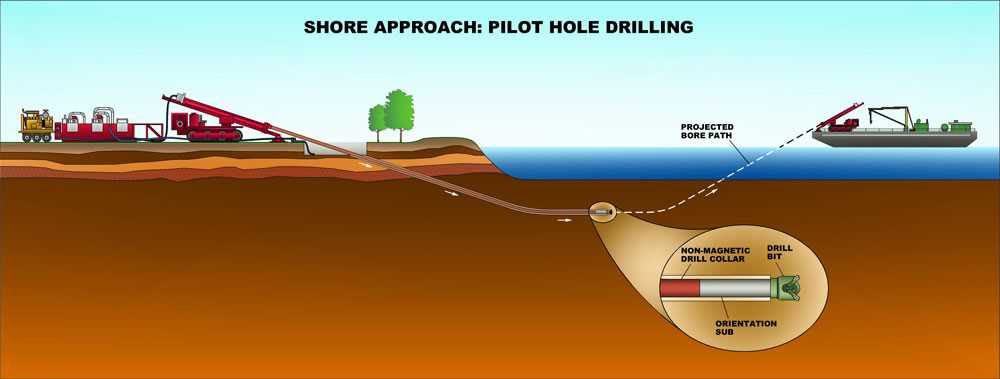
Once the pipe is installed, the hole is backfilled with suitable materials, such as bentonite or a mixture of drilling fluid and excavated soil. The site is then restored to its original condition, which may include surface restoration, landscaping, and cleanup.
Overall, a horizontal directional drill offers a versatile and efficient method of installing underground utilities while minimizing disruption to the surrounding environment. Its ability to navigate around obstacles makes it a popular choice for various construction and infrastructure projects.
Types of Horizontal Directional Drills
There are several different types of horizontal directional drills (HDD) commonly used in the industry. Each type has its own unique features and advantages, depending on the specific requirements of the project. Here are some of the most common types of HDD:
1. Small HDD
Small HDD machines are compact and lightweight, making them ideal for projects with limited access or tight spaces. These machines are typically used for smaller diameter bores and shorter distances.
2. Mid-sized HDD
Mid-sized HDD machines are larger and more powerful than small HDDs, allowing for the drilling of larger diameter bores and longer distances. They are often used for medium-sized projects that require increased drilling capacity.
3. Large HDD
Large HDD machines are heavy-duty and capable of drilling larger diameter bores over substantial distances. These machines are commonly used for large-scale projects, such as pipeline installations or highway crossings.
4. Track-mounted HDD
Track-mounted HDD machines are equipped with tracks instead of wheels, providing increased mobility and stability on rough terrain. They are commonly used in challenging environments, such as rocky or uneven terrain.
5. Truck-mounted HDD
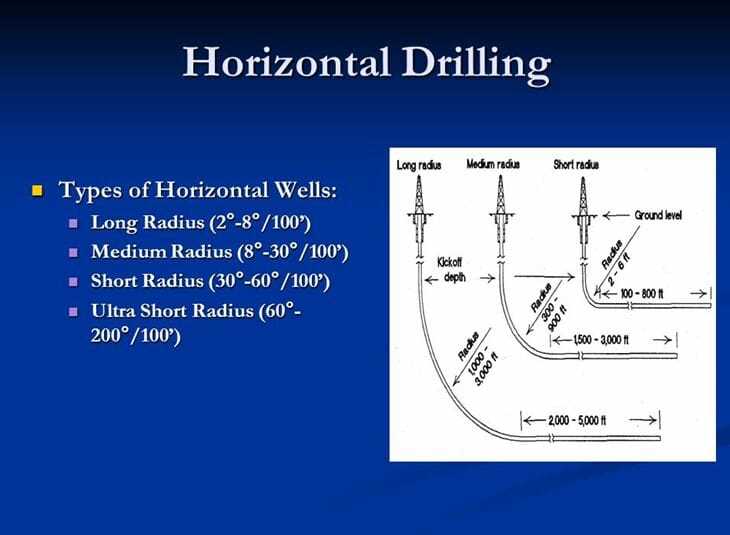
Truck-mounted HDD machines are mounted on the back of a truck, allowing for easy transportation and setup. They are versatile and can be used for a wide range of projects, from small to large.
6. Combination HDD
Combination HDD machines are designed to perform multiple functions, such as drilling, pipe laying, and backfilling. These machines are used for more complex projects that require multiple operations to be carried out simultaneously.
7. Steerable HDD
Steerable HDD machines have the ability to change direction while drilling, making them ideal for projects that require precise navigation around obstacles or changes in the drilling path.
8. Non-steerable HDD
Non-steerable HDD machines can only drill in a straight line and cannot change direction during the drilling process. They are typically used for simpler projects that have a straight drilling path.
9. Guided HDD
Guided HDD machines use a guidance system to ensure accurate drilling, especially when drilling under obstacles or in congested areas. They are often used for projects that require high precision and minimal disruption.
10. Auger HDD
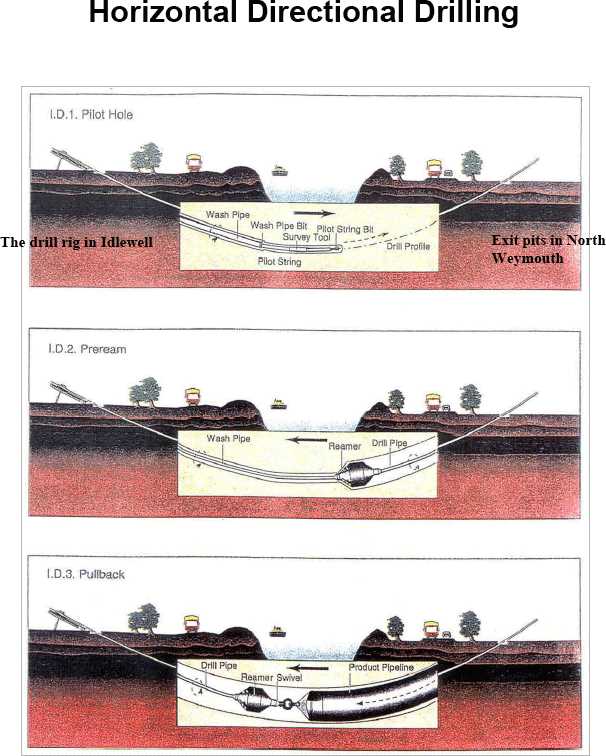
Auger HDD machines use rotating augers to excavate soil and create the bore path. They are commonly used in projects with softer soil conditions.
Overall, the choice of HDD machine depends on various factors, including the specific project requirements, soil conditions, access limitations, and the desired drilling distance and diameter. It is important to select the appropriate type of HDD machine to ensure the successful completion of the project.
Benefits of Using a Horizontal Directional Drill
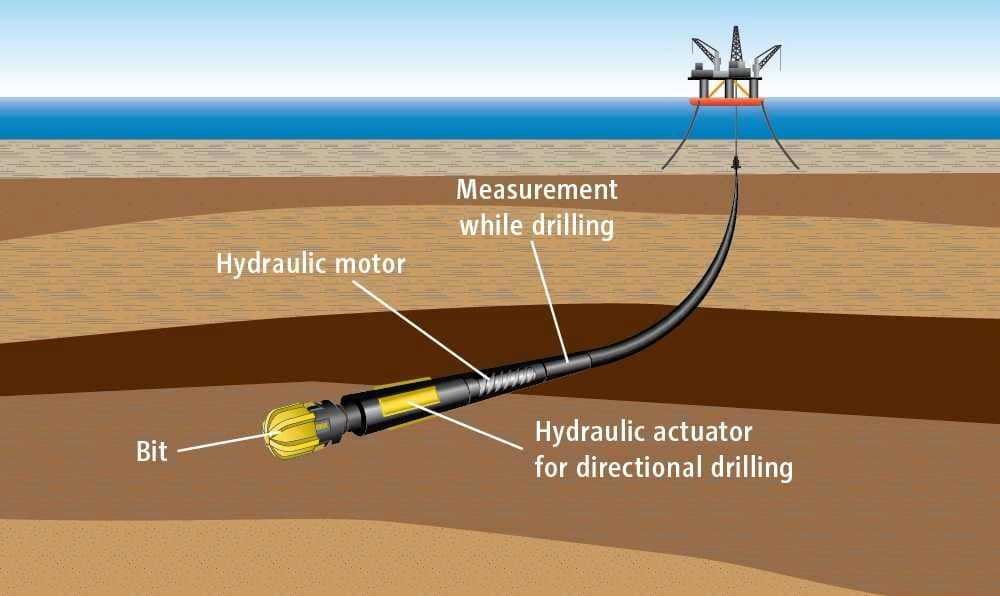
1. Minimizes Surface Disruption
A horizontal directional drill (HDD) is a trenchless method of installing underground utilities. Unlike traditional open trench methods, HDD minimizes surface disruption, making it ideal for projects in urban or environmentally sensitive areas. With HDD, the drill rig is located at one entrance point, and the utility is installed to another exit point, reducing the need for excavation.
2. Versatility
HDD is a versatile method that can be used in a wide range of soil conditions and terrain types. Whether it’s hard rock, clay, or sandy soil, an HDD machine can navigate through these challenges and complete the installation. It can also be used for horizontal, curved, and even vertical installations. This versatility makes HDD an attractive option for various projects.
3. Faster Installation
Compared to traditional excavation methods, HDD offers faster installation. With HDD, there is no need for extensive digging and backfilling, allowing for quicker project completion. The efficiency of HDD can save both time and money for contractors and project owners.
4. Reduced Environmental Impact
Since HDD avoids the need for open trenches, it significantly reduces the environmental impact of a project. HDD minimizes the disruption to the natural landscape, reduces the amount of excavation required, and decreases the potential for soil erosion and sediment runoff. This makes it an environmentally friendly choice for installing underground utilities.
5. Enhanced Safety
HDD eliminates many of the safety hazards associated with traditional excavation methods. Without open trenches, there is a reduced risk of accidents, such as cave-ins or contact with existing underground utilities. The use of directional drilling also means that the operator can remain at a safe distance, further enhancing on-site safety.
6. Cost-Effective
While the initial cost of investing in an HDD machine may be higher than traditional excavation methods, the long-term cost savings can outweigh the initial investment. The faster installation time, reduced labor and material costs, and decreased environmental impact all contribute to the overall cost-effectiveness of using HDD.
7. Able to Cross Obstacles
One of the key advantages of HDD is its ability to navigate around or beneath existing obstacles. Whether it’s a road, river, railway, or other infrastructure, HDD can provide a solution for crossing these obstacles without disrupting their use. This eliminates the need for costly and time-consuming detours or disruptions in service.
8. Reliability and Quality
HDD offers reliable and high-quality installations. The drilling process allows for precise control, ensuring that the utilities are installed at the desired depth and alignment. This results in a more reliable and durable underground infrastructure that requires minimal maintenance or repairs in the future.
9. Reduces Permitting Requirements
Compared to open trench methods, HDD often reduces the permitting requirements for a project. Since there is minimal surface disruption, the need for road closures, right-of-way permits, and environmental impact assessments may be significantly reduced, simplifying the regulatory process and accelerating project timelines.
10. Minimizes Social Disruption
Lastly, HDD minimizes social disruption during construction. The reduced noise, dust, and traffic disruptions associated with open trench methods make HDD a more neighbor-friendly option. This is particularly beneficial when working in residential areas, commercial zones, or other areas with high pedestrian or vehicular traffic.
Applications of Horizontal Directional Drills
The use of horizontal directional drills is growing rapidly in various industries due to their versatility and efficiency. Here are some common applications of horizontal directional drills:
1. Utility Installations
- Drilling underground conduits for electrical cables, telecommunications, and fiber optic cables.
- Installation of gas and oil pipelines.
- Placement of water and sewer lines.
2. Environmental Projects
- Horizontal directional drilling is used to install monitoring wells for environmental studies.
- Drilling for groundwater remediation, allowing the extraction or injection of fluids.
- Installing geothermal loops for efficient heating and cooling systems.
3. Crossings
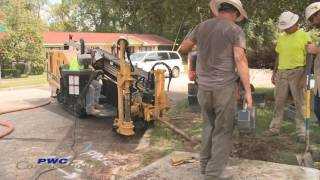
- Horizontal directional drills can be used to create underground crossings beneath obstacles such as rivers, highways, and railways.
- These crossings are often more cost-effective and environmentally friendly than traditional methods like open-cut excavations.
4. Infrastructure Development
- Drilling for the installation of underground drainage systems.
- Constructing tunnels and conduits for transportation projects.
- Placing underground fiber optic cables for smart city initiatives.
5. Geotechnical Projects
- Horizontal directional drilling is used for soil investigation and sampling.
- Creating soil stabilization systems to prevent landslides and erosion.
- Installing ground anchors for structural support in construction projects.
These are just a few examples of the many applications of horizontal directional drills. As technology continues to advance, the capabilities of these machines will only expand, making them an essential tool in various industries.
Environmental Impact of Horizontal Directional Drills
As with any construction activity, horizontal directional drills (HDD) can have an impact on the environment. It’s important to mitigate these impacts to protect the surrounding ecosystems and minimize any disruption to the natural habitat. Some of the potential environmental impacts of HDDs include:
-
Vegetation and Wildlife Disturbance: The placement of an HDD rig and the drilling process itself can disturb the local vegetation and wildlife. Vegetation may need to be cleared or damaged during the installation process, which can have an impact on the ecosystem and wildlife habitats in the area. It is crucial to assess the potential impact on vegetation and wildlife and take measures to minimize disturbance and rehabilitate the area after drilling is complete.
-
Soil Erosion and Sedimentation: Construction activities, including HDD, can cause soil erosion and sedimentation, which can lead to adverse effects on water bodies. When soil is disturbed, it can be carried by rainwater into nearby streams, rivers, or other water bodies, causing sedimentation and reducing water quality. Implementing erosion control measures such as erosion control barriers and sediment filters can help prevent soil erosion and minimize sedimentation during HDD operations.
-
Noise and Vibration: HDD operations can generate noise and vibrations that may impact humans and wildlife living nearby. Continuous noise from drilling and equipment can disturb wildlife, while strong vibrations can lead to structural damage to nearby buildings or infrastructure. Implementing noise barriers, limiting drilling operations during sensitive times, and conducting vibration monitoring can help mitigate the impact of noise and vibrations.
-
Water Contamination: Drilling activities can introduce contaminants into groundwater or nearby surface water bodies if proper precautions are not taken. Potential contaminants may come from drilling fluid, lubricants, or fuel used in the drilling equipment. To prevent water contamination, it is crucial to use appropriate containment measures, such as proper well design and installation, ensuring proper disposal of drilling fluids, and regular monitoring of water quality during and after drilling operations.
-
Waste Generation and Disposal: HDD operations can generate waste materials, such as drilling mud and cuttings, which need to be properly managed to prevent environmental harm. Disposal of waste materials should be carried out in accordance with local regulations and best practices to minimize the impact on the environment. Recycling or reusing drilling mud and cuttings whenever possible can also help reduce waste generation.
-
Cultural and Historical Resources: HDD projects may interact with culturally or historically significant sites or artifacts. It is important to conduct thorough assessments and engage with relevant stakeholders to ensure that any potential impacts on cultural or historical resources are identified and properly managed. This may involve adjusting the drilling path or implementing protective measures to avoid or minimize disturbance to these resources.
By considering and actively addressing these environmental impacts, horizontal directional drilling can be carried out in an environmentally responsible manner, minimizing damage to the surrounding ecosystem and preserving the natural habitat.
Maintenance and Safety Considerations for Horizontal Directional Drills
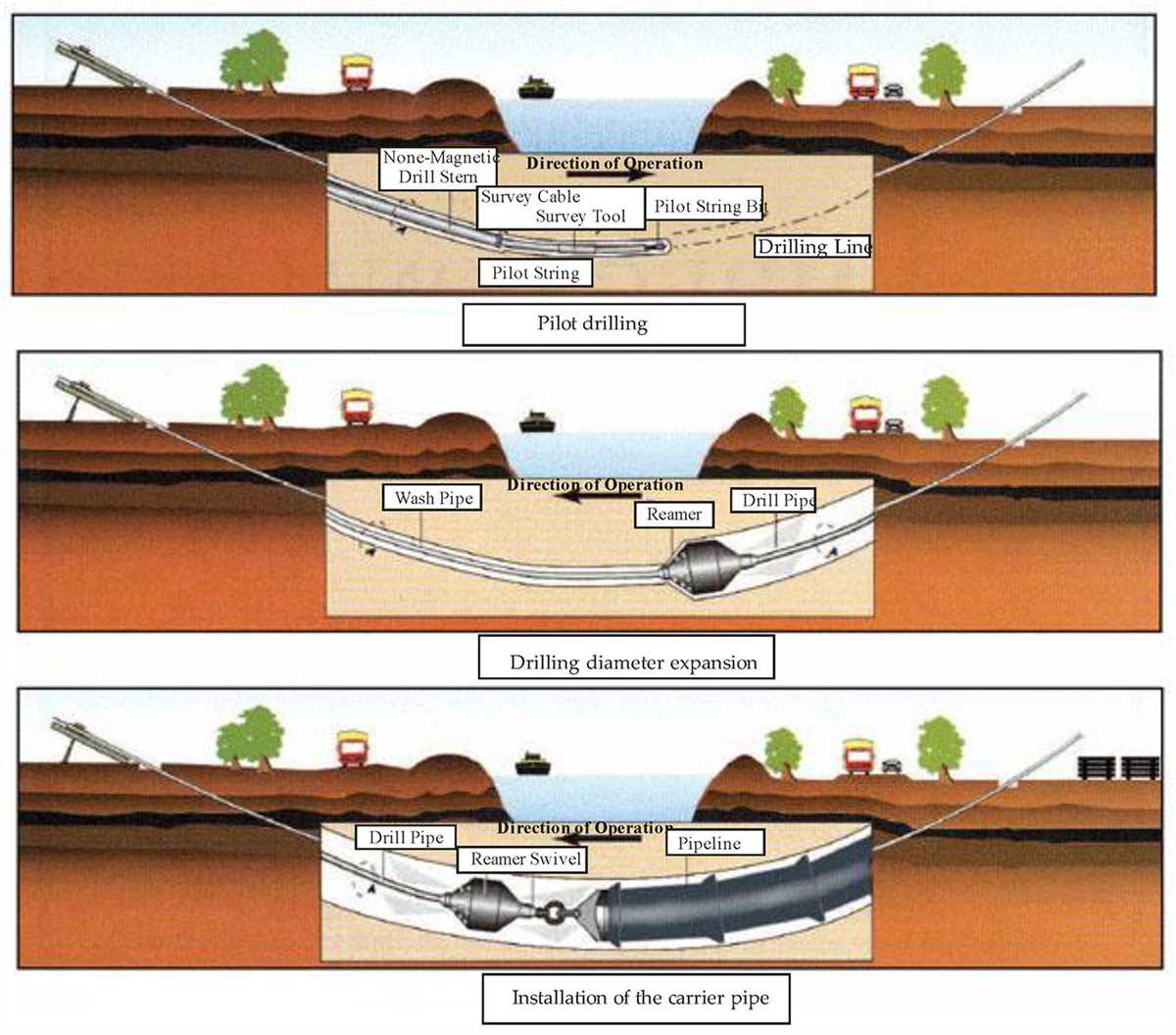
Maintenance
Maintaining a horizontal directional drill is essential for ensuring its optimal performance and longevity. Here are some maintenance considerations to keep in mind:
- Regular inspections: Conduct regular inspections of the drill to identify any worn-out or damaged parts. This includes checking the fluid levels, inspecting the drill pipe, and examining the cutting tools.
- Lubrication: Properly lubricate all moving parts of the drill to reduce friction and prevent damage. Use the manufacturer-recommended lubricants and follow the specified intervals for lubrication.
- Filter replacement: Replace the filters for the hydraulic, coolant, and engine systems as per the manufacturer’s recommendations. Clean filters ensure the efficiency of these systems and prevent contaminants from entering.
- Battery maintenance: Keep the drill’s batteries in good condition by regularly cleaning the terminals and ensuring proper charging. Replace batteries that show signs of deterioration or are no longer holding a charge.
Safety
Operating a horizontal directional drill safely is of utmost importance to protect both the operators and the surrounding environment. Here are some safety considerations to follow:
- Training: Ensure that operators receive proper training before operating a horizontal directional drill. They should be familiar with the equipment and its controls, as well as the safety procedures to follow.
- Protective equipment: Operators should wear appropriate personal protective equipment (PPE) such as hard hats, safety glasses, gloves, and steel-toed boots. Additionally, they should use hearing protection when operating in noisy environments.
- Locating utilities: Before drilling, it is crucial to locate underground utilities using appropriate methods like subsurface utility engineering or utility locating services. Knowing the location of utilities helps prevent accidental damage during drilling.
- Proper setup: Set up the drill in a stable and level position to prevent accidents and maintain stability during operation. Follow the manufacturer’s instructions for proper setup and make sure all safety features are functioning correctly.
Emergency Preparedness
In addition to maintenance and safety considerations, it is essential to be prepared for emergencies that may arise during the operation of a horizontal directional drill. Consider the following:
- Emergency shutdown: Familiarize yourself with the emergency shutdown procedure for the specific drill you are operating. This knowledge can help prevent further damage in the event of an equipment malfunction or unsafe operating conditions.
- Emergency response plan: Have a well-defined emergency response plan in place that outlines the steps to take in case of an accident, injury, or equipment failure. Ensure that all operators are aware of the plan and trained to implement it effectively.
- Communication: Establish a reliable communication system between the operators and other personnel involved in the drilling project. This allows for quick response and coordination in case of emergencies.
- First aid: Ensure that a first aid kit is readily available on-site and that operators are trained in basic first aid techniques. This allows for immediate response in case of minor injuries or accidents.
Maintaining a horizontal directional drill and following proper safety protocols not only ensures the longevity of the equipment but also protects the well-being of the operators and the successful completion of drilling projects.
Choosing the Right Horizontal Directional Drill for the Job
When it comes to horizontal directional drilling (HDD), choosing the right drill for the job is crucial. The success of any drilling project depends on selecting the appropriate equipment that can handle the specific requirements of the job site. Here are some factors to consider when choosing an HDD machine:
1. Size and Power
The size and power of the drill is an important consideration. The drill should be able to handle the diameter and length of the bore required for the project. It should also have enough power to penetrate the soil and complete the drilling tasks effectively.
2. Drill Length and Pullback Force
The drill length and pullback force determine how far and how quickly the drill can install an underground pipe or conduit. Longer drills with higher pullback forces can handle larger and longer installations. It’s important to assess the length and pullback force needed for the specific project requirements.
3. The Terrain
The terrain plays a crucial role in determining the type of drill that should be used. Different terrains require different drilling techniques and equipment. For example, rocky terrains may require a drill with strong drilling capabilities, while soft terrains may require a drill with better maneuverability.
4. Job Site Constraints
The job site constraints, such as space limitations or accessibility restrictions, need to be considered when choosing a drill. Some drills are designed to work in tight spaces or challenging conditions, while others may require more open areas. Assessing the job site constraints will help determine the most suitable drill for the project.
5. Operator Skill Level
The skill level of the operator operating the drill is another important factor. Some drills require more advanced knowledge and experience to operate effectively. It’s important to consider the skill level of the operator to ensure they can handle the chosen drill safely and efficiently.
6. Manufacturer Reputation and Support
Choosing a drill from a reputable manufacturer with good customer support is essential. It ensures that if any issues arise during the project, there will be proper support and assistance available. Research the manufacturers and their customer reviews to ensure you choose a reliable and trusted brand.
7. Cost
Lastly, cost is always an important factor to consider. Evaluate the cost of the drill in relation to its capabilities and the project requirements. It’s important to find a balance between the price and the desired features and performance.
By considering these factors, you can select the right horizontal directional drill that meets the project’s specific needs and ensures a successful drilling operation.
FAQ:
What is a horizontal directional drill?
A horizontal directional drill, also known as HDD, is a trenchless drilling method used to install underground utilities such as pipelines, cables, and conduits. It involves drilling a hole horizontally underground without having to disturb the surface.
How does a horizontal directional drill work?
A horizontal directional drill works by using a drilling rig with a specially designed drill bit. The drill bit is connected to a hollow pipe known as the drill string. The drill string is pushed underground, and as it rotates, the drill bit cuts through the soil or rock. The drill string is also equipped with a steering mechanism that allows the operator to control the direction of the drill.
What are the advantages of using a horizontal directional drill?
Using a horizontal directional drill offers several advantages. Firstly, it eliminates the need for open trenches, which reduces disruption to the surrounding environment. Secondly, it allows for the installation of utilities under obstacles such as roads, rivers, or buildings. Additionally, it is a faster and more cost-effective method compared to traditional trenching.
What types of projects are suitable for horizontal directional drilling?
Horizontal directional drilling is suitable for a wide range of projects. It can be used for installing water and sewer lines, telecommunications cables, electrical conduits, and gas pipelines. It is also commonly used in environmental remediation projects, such as installing soil vapor extraction wells or groundwater monitoring wells.
What are the challenges involved in horizontal directional drilling?
Horizontal directional drilling can present some challenges. One of the main challenges is accurately navigating the drill underground and avoiding obstacles such as existing utilities or rock formations. Another challenge is managing the drilling fluids used to lubricate the drill bit and carry the cuttings to the surface. Proper disposal or treatment of the drilling fluids is important to avoid environmental harm.
What safety precautions should be taken during horizontal directional drilling?
Safety precautions are essential during horizontal directional drilling. Before starting the drilling operation, it is important to conduct a thorough site survey to identify any potential hazards. The drilling equipment should be properly maintained and inspected regularly. Adequate personal protective equipment (PPE) should be worn by all workers, and safe operating procedures should be followed at all times to prevent accidents.
Video:













